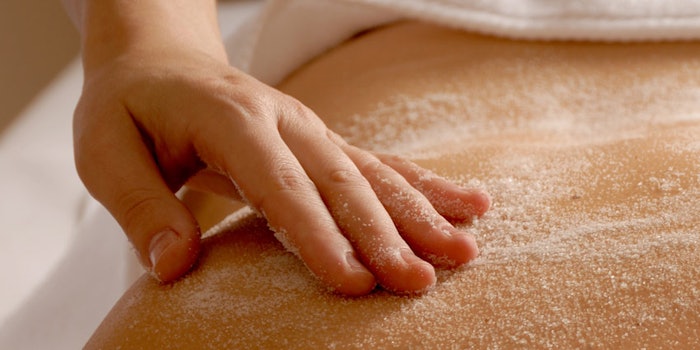
We are in the skin care industry, so we know the importance of exfoliation, but are clients picking up on the message? Sure, they probably exfoliate occasionally, but probably not nearly enough, and I’d venture to guess that most clients don’t know what type of exfoliant they should use for their skin type and concerns, and how often.
 This matter is, of course, complicated when we throw in recent legislation banning plastic microbeads in personal care. These polyethylene beads provided safe exfoliation with their spherical, uniform shape, but it was suggested that their chemical and physical properties allow them to bypass wastewater treatment plants to end up in rivers, lakes and streams. Most U.S. manufacturers are phasing out their microbeads with eco-friendly alterternatives (they have to by July 2017), and it is important to investigate the physical exfoliant used in your scrubs to communicate a message of safety to your client.
This matter is, of course, complicated when we throw in recent legislation banning plastic microbeads in personal care. These polyethylene beads provided safe exfoliation with their spherical, uniform shape, but it was suggested that their chemical and physical properties allow them to bypass wastewater treatment plants to end up in rivers, lakes and streams. Most U.S. manufacturers are phasing out their microbeads with eco-friendly alterternatives (they have to by July 2017), and it is important to investigate the physical exfoliant used in your scrubs to communicate a message of safety to your client.It is equally as important to choose the right exfoliants for your clients, and communicate clearly how often they need to use these products. Of course, in-office chemical exfoliation is an important piece of this puzzle.
This issue is all about a better understanding of exfoliation—so spa owners can have the right treatments and protocols to tackle every skin type and concern.
Terri Wojak explores effective tools for exfoliation, including dermaplaning, microdermabrasion and high pressure saline exfoliation. According to Wojak, there are pros and cons to all types of exfoliation, and it is up to the technician to choose the proper method for a client based on their knowledge.
Lydia Sarfati also discusses exfoliation, here tackling the different methods of body exfoliation, including manual, chemical and granular. She also offers an example treatment protocol for each example and even a few targeted exfoliating treatments.
To further help spa owners and skin care professionals choose exfoliation treatments and products for their clients, a list of exfoliating products can be found, as compiled by our editors.
You’ve got all the tools you need, but clients still need convincing. To turn both their mind and skin around, remind them that exfoliation can improve tone and texture, while lessening pigmentation and fine lines and wrinkles. On top of all this, exfoliation makes their skin care products work much better—need I say more?
As I am thinking about turning over new skin, I am reminded about turning over a new leaf and that Face & Body Midwest has moved this year, to take place Jan. 21-23, 2017 at the Donald E. Stevens Convention Center. We moved to a new location to offer even more products, tools, services and great education to our attendees, and the January date allows us to bring you these things when you are thinking about and ready to make changes to the following year. Now, that’s what I call renewal.
Yours in education,

Katie Anderson
Managing Editor











